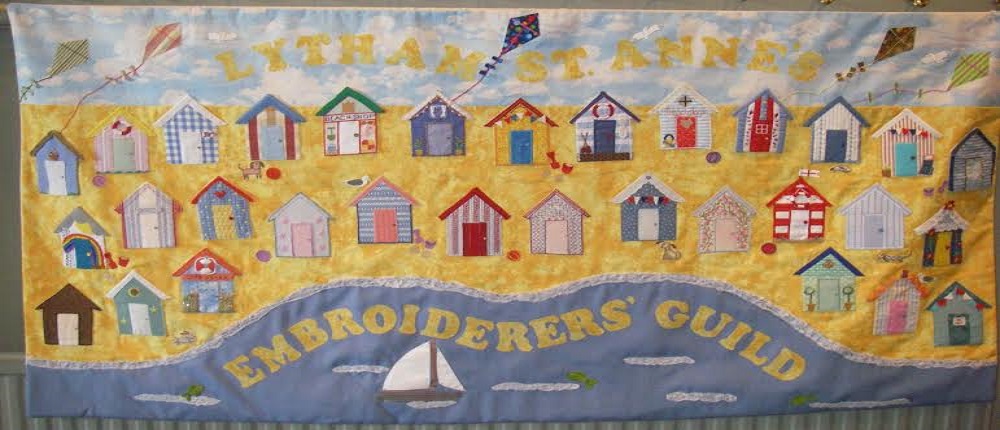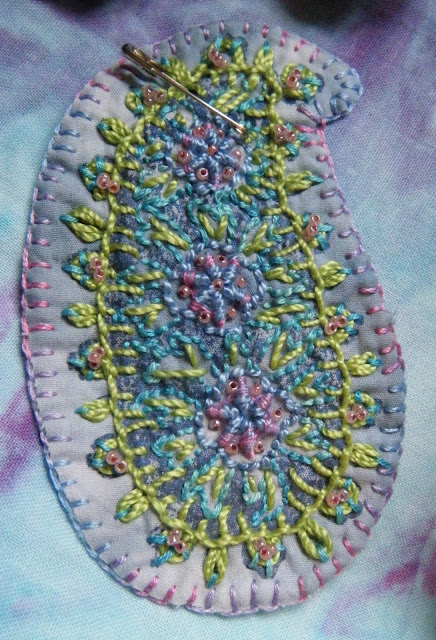Here is a little update showing you the finished results. These are 4 that were brought to our last meeting.
And here they are are again shown separately in close up to allow you to see the lovely details. The beads inside the chain stitches are really effective and give a sumptuous look with an easy stitch. Love that idea!
Here is another Paisley that is the same shape and design as the one stitched by but looks so different. The centre small paisleys are chain stitched and sequins add sparkle.
A totally different design using Satin stitches, detached chain and blanket stitch along side straight stitches and pearl beads look very pretty.
Very tiny back stitches and little sequins make a beautifully executed piece.
We really enjoyed this activity; set for us by Sandra Kendall of the North Lonsdale Branch and can't wait to see them all in situ making up the tail feathers on the Peacock Wall hanging. Its going to look stunning.





















































